Discover the best design document template software to enhance your team's productivity. Find the perfect tool for creating, managing, and sharing designs.
Clear design documentation is crucial for successful software projects. This list explores 8 design document template software options to help streamline your workflow. Learn how these tools solve the challenges of creating, organizing, and sharing design documents efficiently. Whether you’re building a web application, mobile app, or any software system, discover which design document template software best suits your needs, from established platforms like Confluence and Notion to versatile options like Figma, Google Docs, Coda, Nuclino, ClickUp, and even Microsoft Word with templates.
Confluence, a product of Atlassian, stands out as a leading design document template software solution, offering a centralized hub for teams to collaborate, create, organize, and manage their design documentation. It goes beyond simple document storage, providing a rich feature set designed to streamline workflows and improve communication throughout the design process. This makes it ideal for a range of users from software developers and engineers in tech startups and large organizations to freelancers and small business owners working on web and app development projects. Its powerful features facilitate clear documentation, which is crucial for successful DevOps implementation as well. Confluence’s strength lies in its ability to connect teams and information, making it a robust choice for managing complex projects.
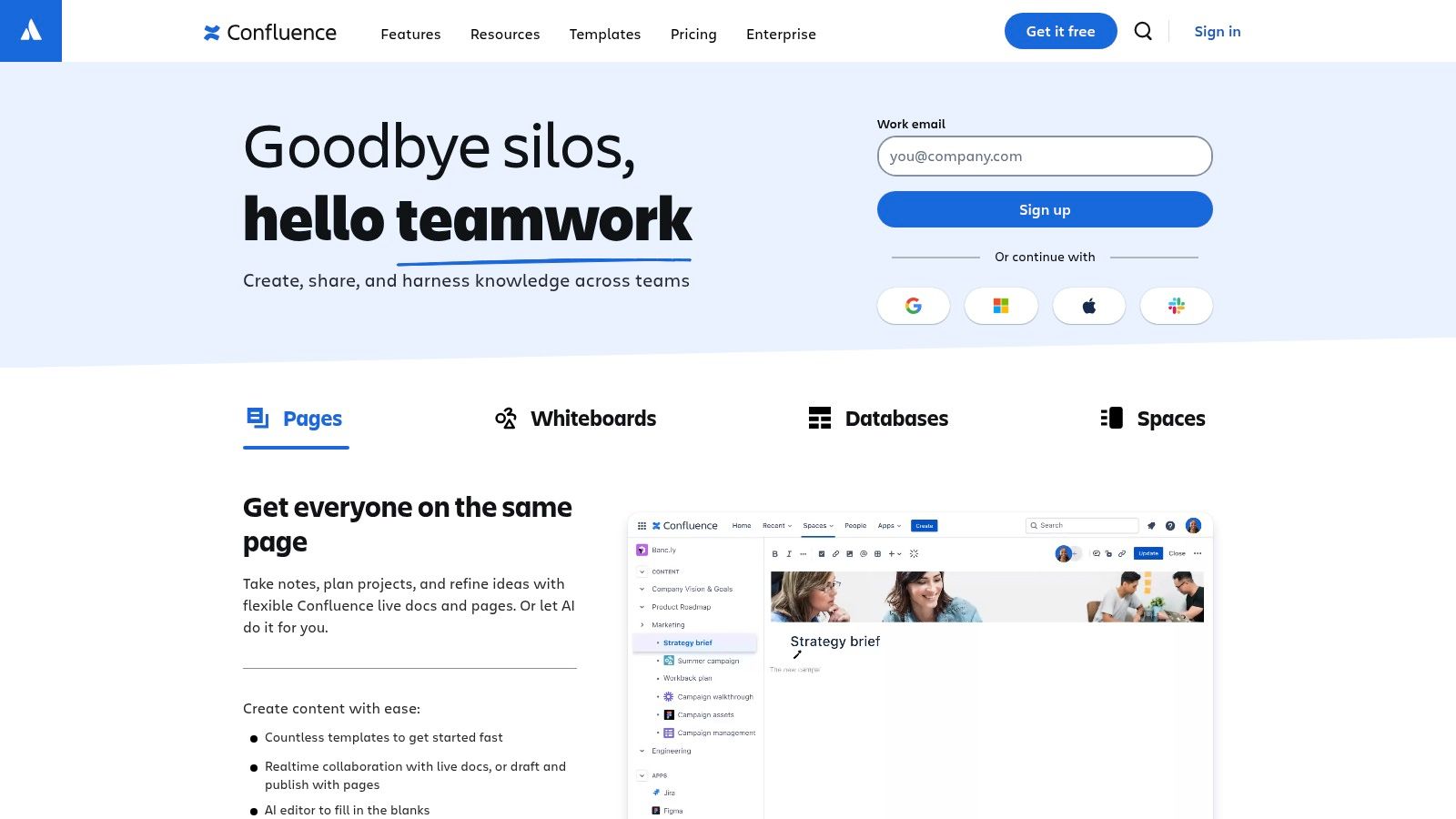
Confluence provides a comprehensive library of pre-built design document templates, covering various software development methodologies and use cases. This eliminates the need to start from scratch, saving valuable time and ensuring consistency across projects. For example, teams can utilize templates for Software Requirements Specifications (SRS), API documentation, user stories, and more. Real-time collaborative editing features, complete with version history, allow multiple team members to contribute simultaneously, fostering transparency and reducing the risk of conflicting edits. The tight integration with other Atlassian products like Jira and Trello further enhances its value by enabling seamless task management and issue tracking directly within the design documentation workflow. Furthermore, customizable spaces and hierarchical page organization provide a structured approach to information architecture, ensuring easy navigation and discoverability of design documents. The advanced search functionality helps users quickly locate specific information within the expansive knowledge base. Learn more about Confluence, specifically how to import markdown documentation.
Pros:
Cons:
Confluence’s pricing varies based on the number of users and the chosen plan. Free plans are available for small teams, while standard and premium plans offer increased functionality and support. Technical requirements are minimal, as Confluence is cloud-based and accessible through any modern web browser. Compared to similar tools like Notion or Google Workspace, Confluence stands out with its specialized focus on software development and its deep integration with the Atlassian ecosystem. When implementing Confluence, it’s crucial to carefully plan your space organization and permission structure to optimize usability and ensure efficient knowledge management. Start with a pilot project involving a small group of users to familiarize yourself with the platform and refine your setup before rolling it out to the entire organization.
Confluence earns its place in this list due to its comprehensive features tailored specifically for design document management. Its collaborative editing, robust integrations, and structured organization make it a valuable asset for software development teams of all sizes. While the cost and complexity might be a barrier for some, the benefits of improved communication, streamlined workflows, and centralized knowledge management outweigh the drawbacks for many organizations. Visit the official Confluence website (https://www.atlassian.com/software/confluence) for more information and to explore the available plans.
Notion stands out as a robust all-in-one workspace, ideal for those seeking a flexible and collaborative environment for creating design documents. Its modular, block-based system enables the construction of highly customized design document templates, accommodating diverse content types such as text, images, tables, databases, and even embedded files. This versatility makes Notion a popular choice among startups and design teams, especially those drawn to its clean interface and adaptable structure. This flexibility means that Notion can be tailored to fit various design document needs, from simple wireframe mockups to complex system architecture diagrams. For software developers, the ability to embed code snippets directly into design documents is invaluable.
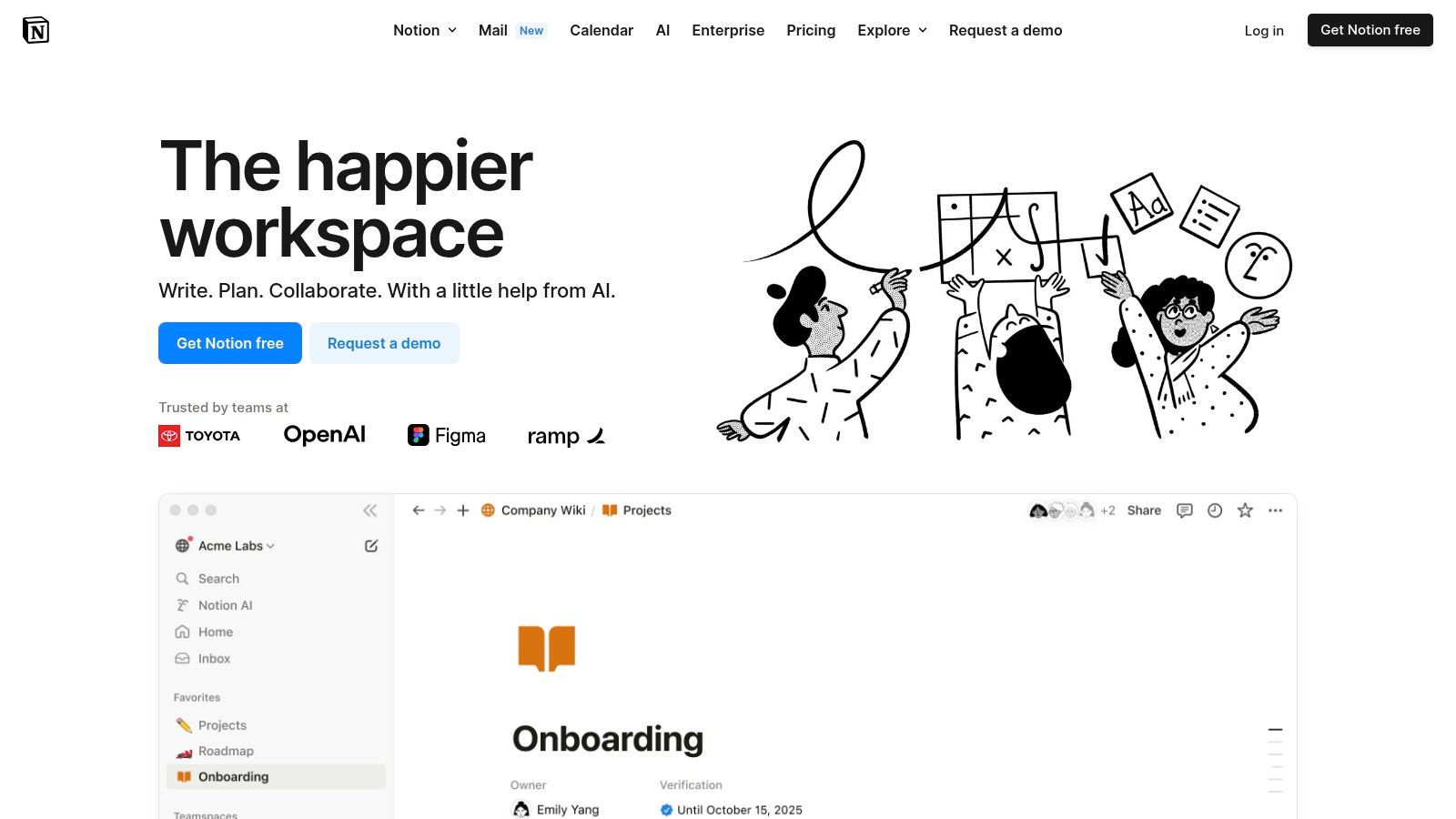
Notion’s block-based editing system is a core strength, empowering users to structure their design documents precisely as needed. The database functionality adds another layer of organization, enabling efficient filtering and sorting of design documents based on criteria like project, status, or assigned team member. For teams already leveraging Notion for project management, integrating design documentation into the same platform streamlines workflows and improves cross-functional communication. This tight integration minimizes context switching and keeps all project-related information centralized. Furthermore, a rich template gallery, including community-created design templates, provides a jumpstart for various design documentation needs, saving time and effort. You can even learn more about Notion and how to integrate it with other tools.
Notion offers a generous free tier, making it accessible to individuals and small teams. Paid plans unlock additional features such as increased file upload limits and collaborative features for larger teams. Notion is available on multiple platforms (web, desktop, and mobile), ensuring seamless access to design documents regardless of location. This cross-platform availability, coupled with synchronized content, facilitates real-time collaboration and keeps everyone on the same page.
While Notion shines in its customizability and collaborative features, it’s important to be aware of some potential drawbacks. Performance can become sluggish with very large documents, impacting the user experience. Offline capabilities are somewhat limited, requiring careful planning when working in environments without internet access. While the basic features are intuitive, mastering the more advanced functionalities, such as databases and formulas, demands a learning curve. Finally, compared to dedicated enterprise solutions, Notion’s permission system is less granular, which might be a concern for organizations with strict access control requirements.
Key Features:
Pros:
Cons:
Website: https://www.notion.so/
Notion’s versatility and ease of use make it a strong contender for teams seeking a flexible and centralized platform for design document template software. Its affordability, combined with powerful features like database integration and a block-based editor, positions it as a valuable tool for tech startups, freelancers, and even larger engineering teams looking to streamline their design documentation process.
Microsoft Word, a stalwart in document processing and a component of the Microsoft 365 suite, remains a viable option for creating design documents. While not specifically designed as design document template software, its robust formatting tools, readily available templates, and collaborative features like track changes and commenting make it a familiar choice for many. Its extensive template library offers a starting point for various design document types, from software architecture specifications to user interface designs. These templates can be further customized, saved, and shared within an organization, promoting consistency and efficiency. For teams already entrenched in the Microsoft ecosystem, Word’s integration with SharePoint facilitates collaborative editing and version control.
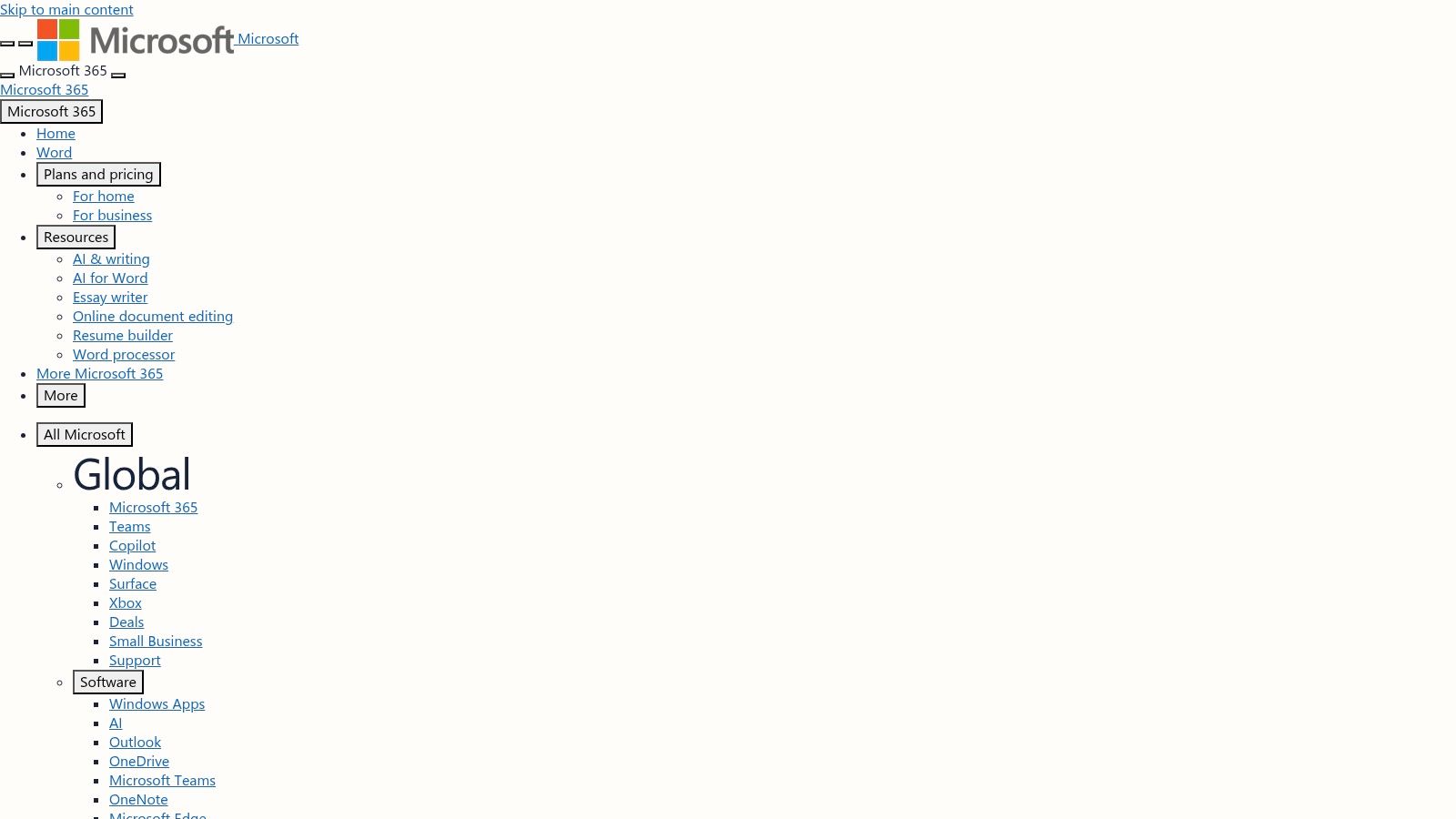
Word’s strength lies in its universal compatibility and comprehensive formatting capabilities. Software developers, engineers, and tech startups can leverage these features to produce professional-looking design documents with detailed diagrams, flowcharts, and code snippets. Advanced proofing and review tools ensure clarity and accuracy, which are critical for complex technical documentation. The familiar interface and mature feature set minimize the learning curve, allowing teams to quickly adopt and implement the tool. For individuals and small businesses working offline, Word offers cloud sync options, enabling access to documents from anywhere.
However, compared to dedicated design document template software or web-based alternatives, Word has some drawbacks. Collaboration, while possible, is less streamlined than in real-time collaborative editors. For simple design documents, Word’s extensive feature set can feel overwhelming and unnecessarily complex. Managing templates across large teams can also present challenges, potentially leading to version control issues. Lastly, utilizing Word requires a subscription to Microsoft 365, which adds a recurring cost. This cost might be a barrier for freelancers or small businesses on a tight budget.
Features:
Pros:
Cons:
Website: https://www.microsoft.com/microsoft-365/word
Implementation Tip: Create a centralized template repository within SharePoint to facilitate template sharing and version control among team members. Establish clear naming conventions and update procedures to avoid confusion and maintain consistency across design documents.
Word deserves its place on this list because it offers a readily accessible and familiar solution for creating design documents. For teams already utilizing Microsoft 365, leveraging Word for design documentation can be a cost-effective way to leverage existing resources and expertise. However, teams prioritizing real-time collaboration and specialized features might find dedicated design document software or web-based platforms more suitable.
Figma is a powerful, cloud-based design tool rapidly gaining traction as design document template software. While primarily known for design and prototyping, its collaborative features and readily available templates make it a compelling choice for creating and maintaining living design documents. Teams leverage Figma to document UI components, establish comprehensive design systems, and detail visual specifications, all with the added benefit of interactive elements. This positions Figma as a valuable tool for software developers, engineers, tech startups, and small business owners looking to streamline their design processes.
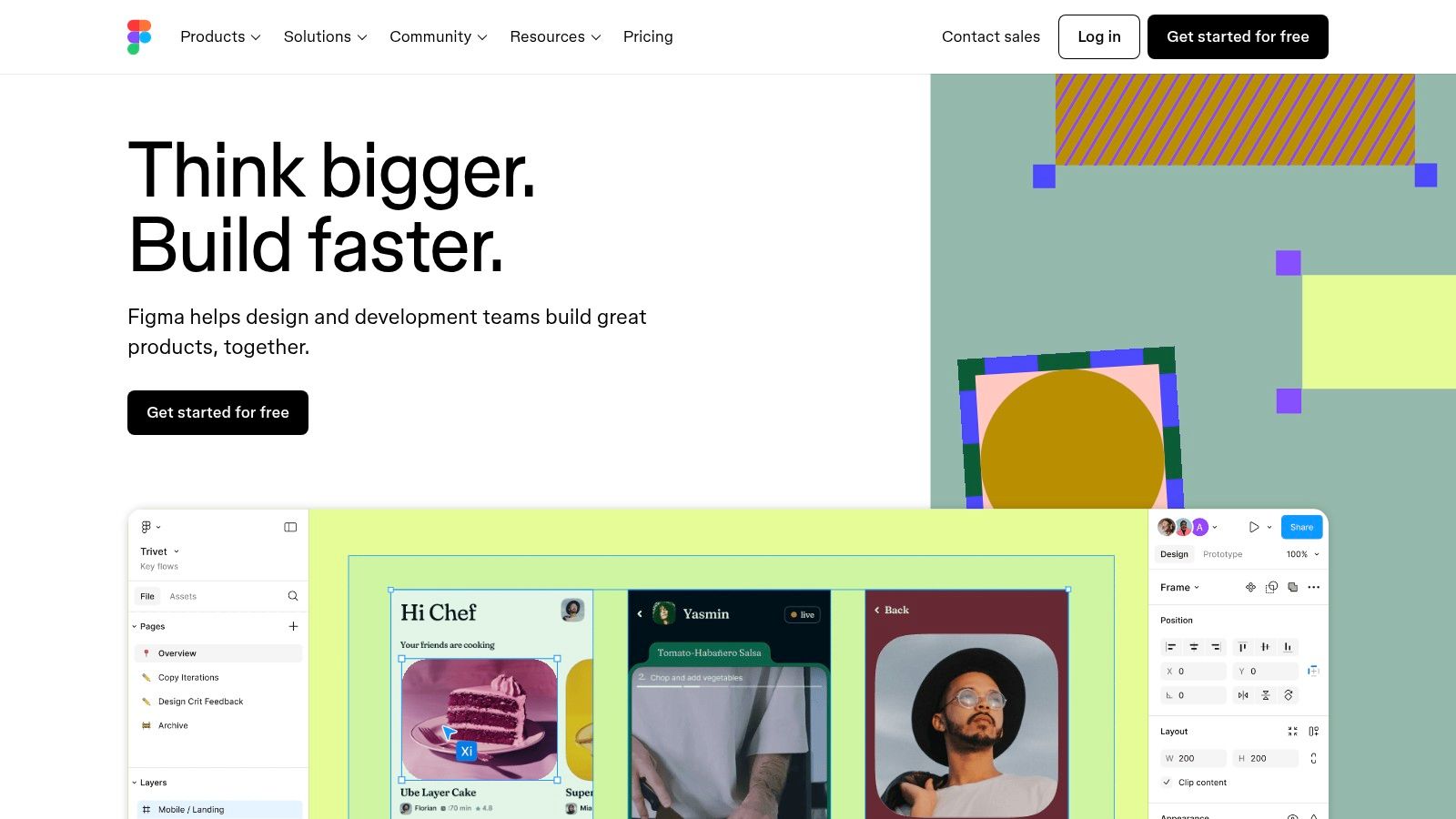
Figma’s strength lies in its ability to seamlessly integrate design assets and documentation. Features like real-time collaborative editing allow design teams, developers, and even stakeholders to work concurrently on design documents, fostering faster iterations and reducing communication overhead. Component libraries serve as reusable templates, ensuring consistency across projects and accelerating the documentation process. Version history and branching capabilities, similar to those found in code repositories like Git, facilitate efficient tracking of changes and exploration of alternative design directions. The ability to create interactive documentation with clickable prototypes sets Figma apart, allowing developers and engineers to experience the intended user flow directly within the design document. Furthermore, FigJam, Figma’s integrated whiteboarding tool, provides a space for brainstorming and collaborative documentation, facilitating early-stage design discussions and ideation.
For visually-driven design documentation, particularly concerning UI/UX, Figma excels. Consider a web development team building a new application. They can use Figma to create a comprehensive design system, documenting each UI component with interactive prototypes and detailed specifications. This allows front-end developers to understand the intended behavior and visual style, ensuring accurate implementation. However, for text-heavy documentation, like API specifications or detailed technical requirements, Figma’s capabilities are less ideal. Its focus on visual elements makes it less suited for managing extensive textual information.
While Figma offers a free tier, premium features require a paid subscription. The cost varies based on the plan selected, affecting the number of editors, version history, and available storage. Technical requirements are minimal, thanks to its browser-based nature. Any modern browser and an internet connection are sufficient to access and utilize Figma, eliminating the need for installations and ensuring platform compatibility across Windows, macOS, and Linux.
Compared to traditional documentation tools like Microsoft Word or Google Docs, Figma offers a dynamic and collaborative approach, particularly suited for visual design documentation. However, its learning curve for non-designers might pose a challenge, and the limited export options for traditional document formats can be a constraint for certain workflows.
Key Features and Benefits:
Pros:
Cons:
Website: https://www.figma.com/
Figma earns its place on this list due to its strengths in collaborative, visual design documentation. Its intuitive interface, powerful features, and readily available templates make it an attractive option for teams prioritizing visual communication and streamlined design workflows, particularly in the context of web and app development. However, teams should consider its limitations with text-heavy content and potential learning curve for non-designers when evaluating its suitability for their specific needs.
Google Docs, a ubiquitous web-based word processor, earns its place on this list of design document template software due to its accessibility, collaborative features, and ease of use. While not specifically designed for complex design documentation, its flexibility makes it a viable option, especially for teams already entrenched in the Google Workspace ecosystem. It allows for the creation and sharing of design document templates, fostering a streamlined workflow for various projects. This makes it a practical choice for software developers, tech startups, and small business owners looking for a readily available solution for generating and managing design documentation.
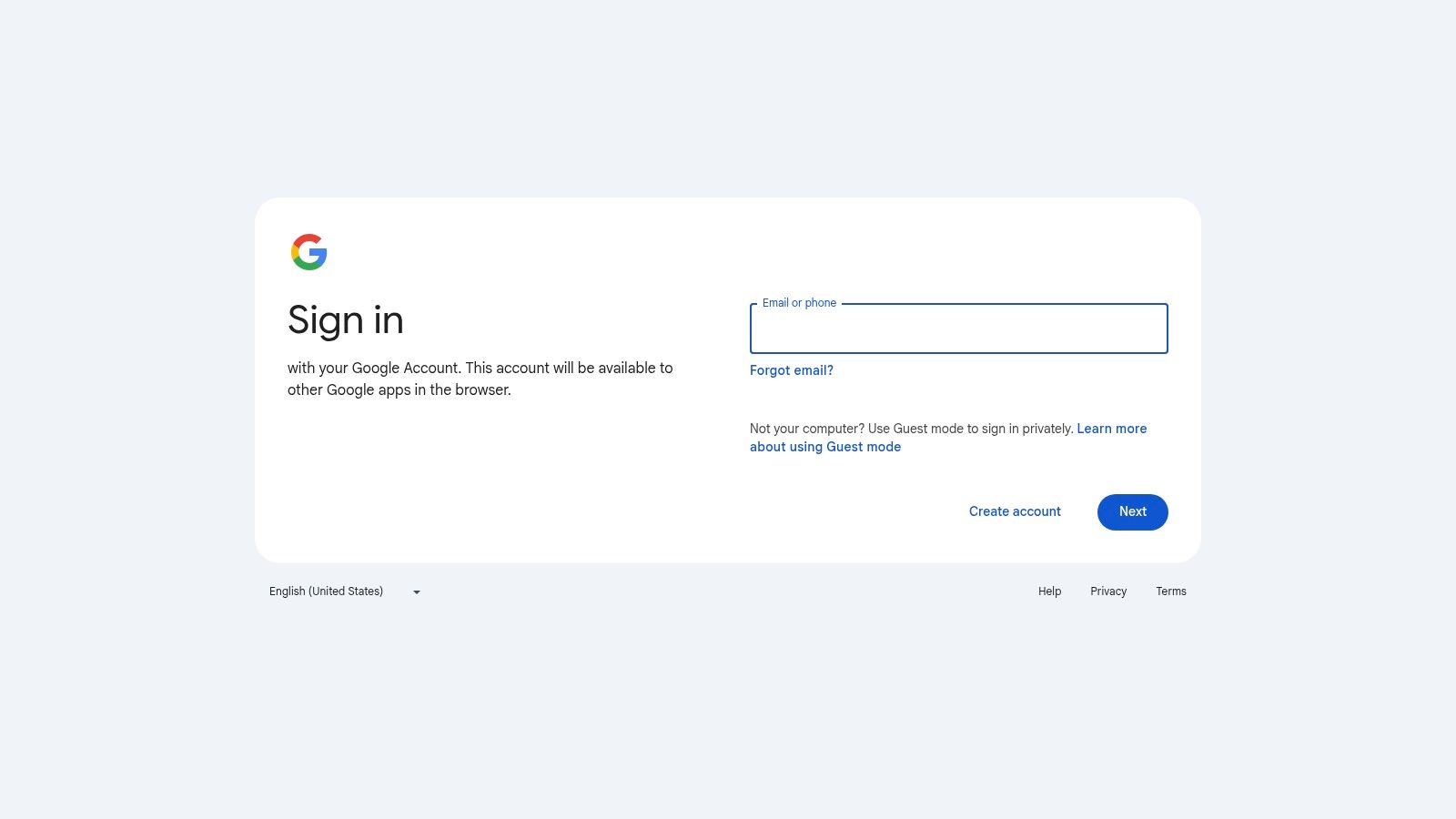
For software engineers, Google Docs can be leveraged to draft initial design specifications, API documentation, and even user interface (UI) mockups using basic tables and drawings. Tech startups, often operating with limited resources, can benefit from its free access and real-time collaboration features, allowing multiple team members to contribute to design document template software simultaneously. Freelancers and small business owners can use pre-designed templates for proposals, project briefs, and client communication, adapting them as needed. Even engineering teams engaged in web or app development can utilize Google Docs for basic documentation tasks, although more specialized tools may be preferred for complex projects. DevOps teams can also find value in using Google Docs for collaborative runbooks or incident reports.
Key features that contribute to its utility as design document template software include: real-time co-editing, allowing multiple users to work on the same document simultaneously; a template gallery, though less powerful than dedicated template management solutions, offering a starting point for various document types; a robust commenting and suggestion system, facilitating feedback and revisions; automatic saving and version history, ensuring data integrity and allowing for easy rollback to previous versions; and seamless integration with other Google Workspace apps, streamlining workflows and data sharing.
Pros: